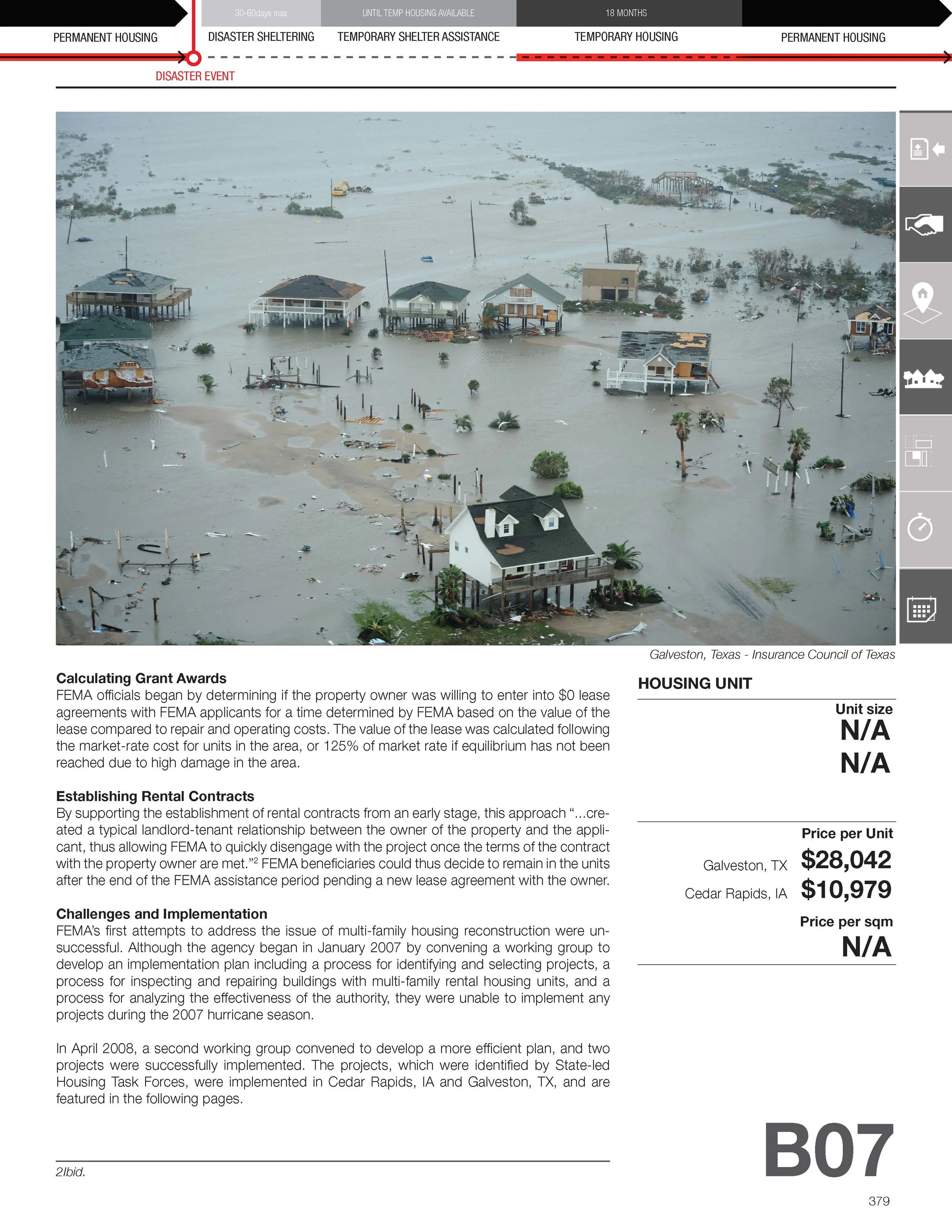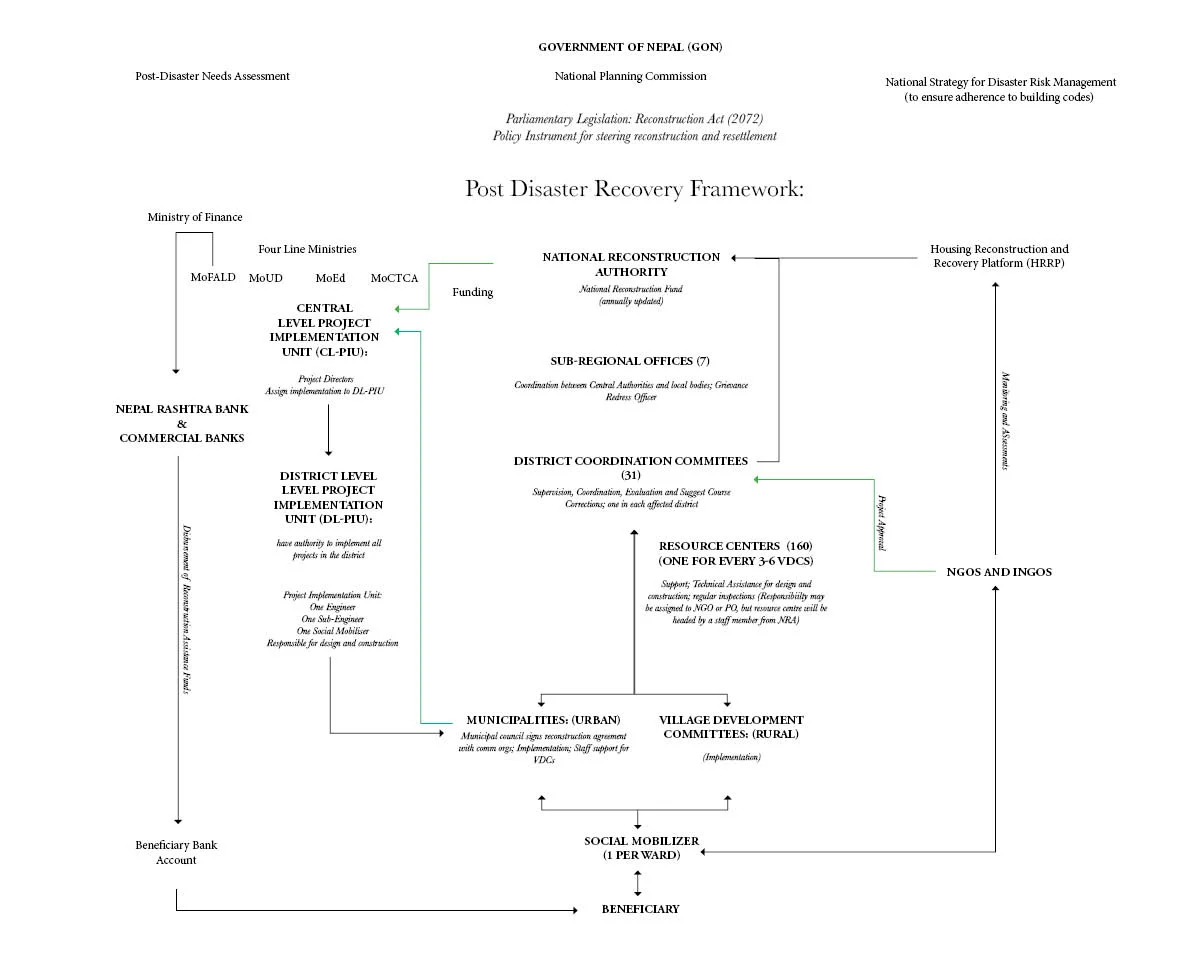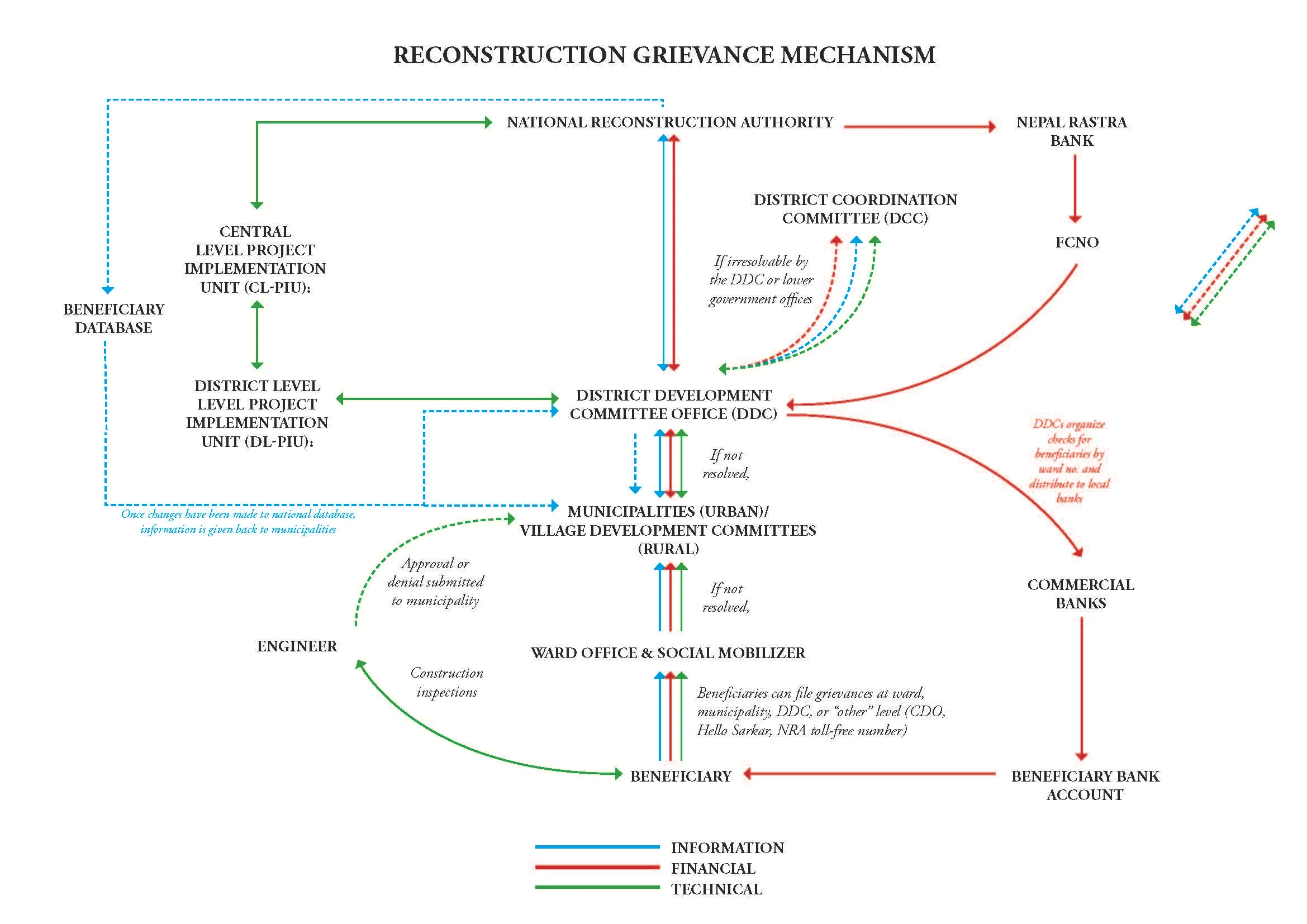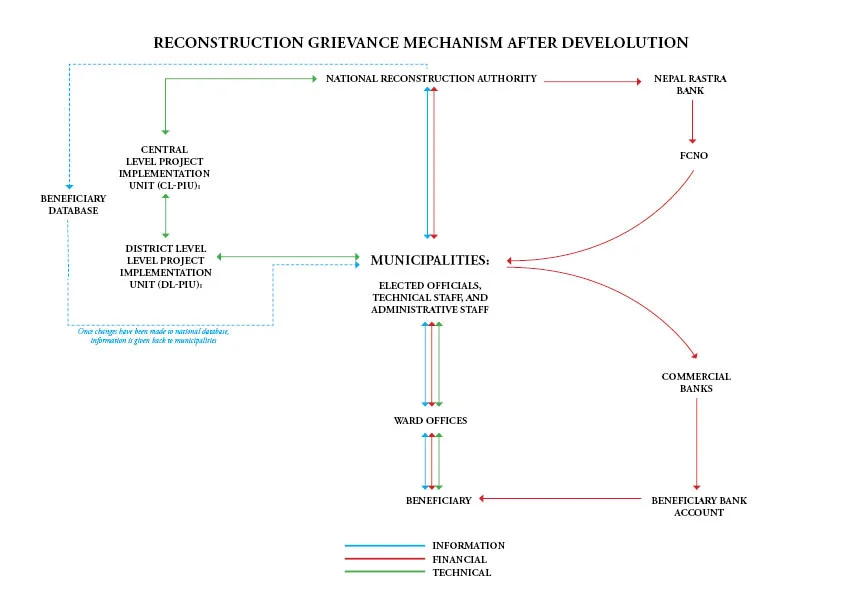FEMA Post-Disaster Housing Case Study Precedents
With Urban Risk Lab
Summer 2017
Comprehensive case study analysis of post-disaster housing provision and reconstruction policies to inform a new housing typology for post-disaster FEMA housing .
Shifts in the Political Economy of Reconstruction Since the 2017 Municipal Elections in Nepal
With Niti Foundation Nepal
August 2018, MIT MISTI
The reconstruction process in Nepal in respone to the 2015 Gorkha Earthquake is characterized by procedural incongruities and bureaucratic hassles which resulted in delays in reconstructions despite NRA’s continuous attempt to streamline the process over time using various guidelines and regulations. There are three broad procedural categories for the process including: (a) information flow; (b) technical supervision and (c) financial flow. However, grievance handling transcends these three categories and, aside from financing, is the primary cause of delay to the overall reconstruction work. Local governments are deeply involved in all three processes, and have become even more so since the devolution of authority granted by the 2015 Nepalese Constitution. While municipalities were part of the reconstruction process before the local elections, their role in the process has started to change since elected representatives first assumed office in the summer of 2017. Now, the municipality is much more involved in the expediting decision making, in redressing grievances, and in providing other concessions to the affected households.
Political Economy of Area-Based Approaches to the Syrian Refugee Crisis in Lebanon
With Max Budovitch
June 2017, Aga Khan Center for Islamic Architecture at MIT
Despite the intention of the 2015 Lebanon Crisis Response Plan for implementing a national agenda, de-facto responsibility for responding to the Syrian refugee crisis has been and continues to rest with municipalities, in part a result of the current climate of (non) governance in Lebanon. However, municipalities often suffer from a lack of clear principles for action, as well as the resources and capacity to implement localized planning and infrastructure projects. These often arise from the challenges of central budgetary allocation, regulatory staffing requirements, and political deadlock. Although there are a few instances of bilateral agreements with the central government and Unions of Municipalities, the government generally adopts a policy of ‘dissociation’, where it tends to focus on blocking “particularly undesirable options” rather than partnering proactively on desired options. The lack of effective planning capacity at the national and local level has simply been exacerbated by an influx of refugees. Many poor Lebanese households also face a lack of adequate shelter, access to water, and basic infrastructure services, meaning that there have been increased reports of host community resentment due to in-kind and cash-based assistance that target refugees alone. To help build capacity for municipal/ humanitarian coordination to address these issues, UN-Habitat has set up Regional Technical Offices (RTOs) at Unions of Municipalities (administrative units that encompass at least two municipalities) that provide data and coordination for development projects in vulnerable areas. These efforts have unified humanitarian and development efforts of a multitude of actors, yet the novelty of this approach makes national implementation difficult. (Paper Forthcoming)
Documenting Community-Led Reconstruction Efforts in the Kathmandu Valley, Nepal
With Lumanti, Support Group for Shelter
January 2017, MIT MISTI
Urban and peri-urban reconstruction efforts, such as those in traditional Newari communities, will continue to pose many unique challenges. Strong consideration should be given to rebuilding communities in ways that maintain their unique cultural heritage but are also structurally sound in preparation for future earthquakes. However, neither heritage nor safety can take precedent over the desires and goals of the community to guide their own reconstruction process and to grow in accordance with their own values. New methodologies and building codes may need to be developed in order to ensure that construction is both safe and culturally appropriate. While many aspects of this agenda are technical, there are significant political, economic, and social factors that will determine whether the reconstruction effort can be considered a success. Lumanti’s community-led reconstruction work is a model approach because it takes many factors beyond the building structures into account. A multi-stakeholder approach, rather than a top-down management and oversight, will contribute to the development of a strong civil society and hopefully support durable solutions for earthquake victims in Nepal for years to come... (Read more)












